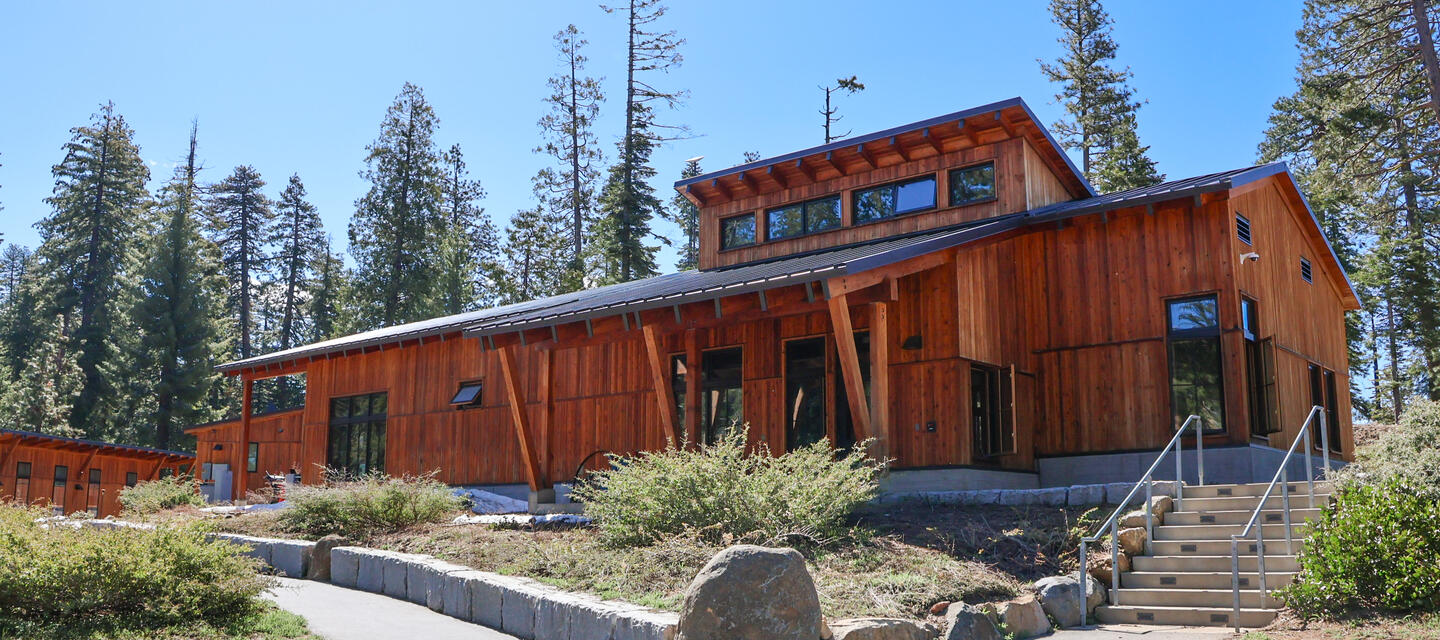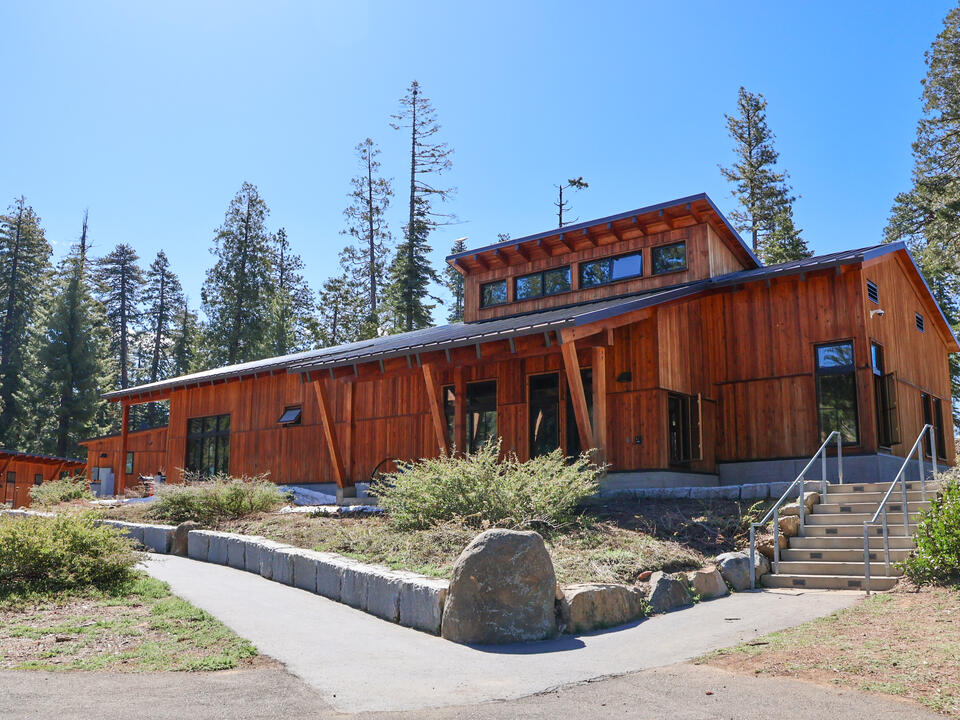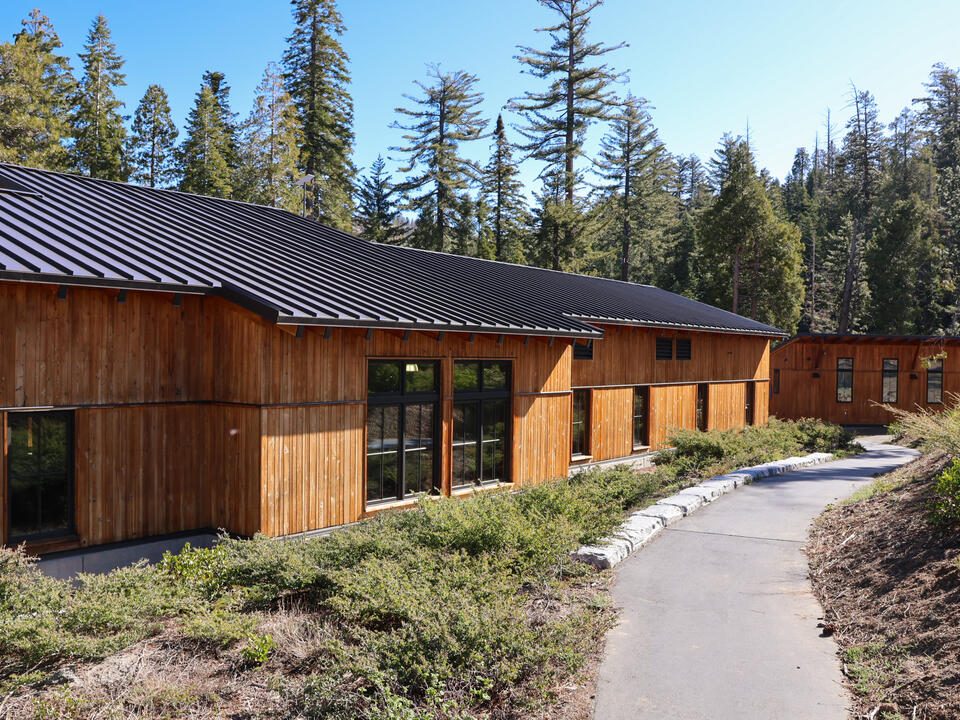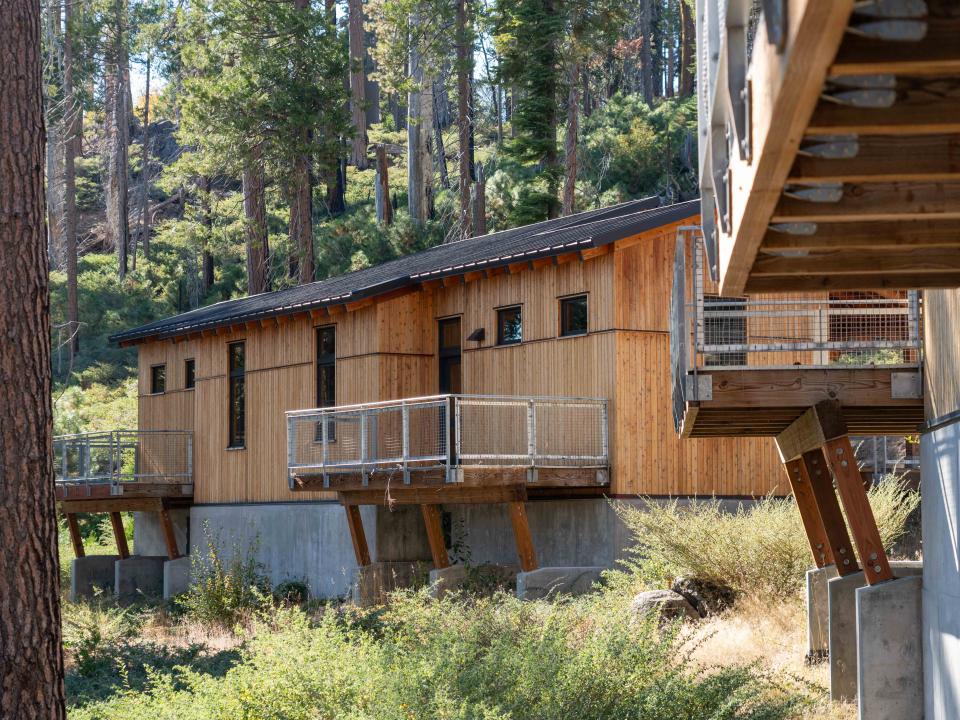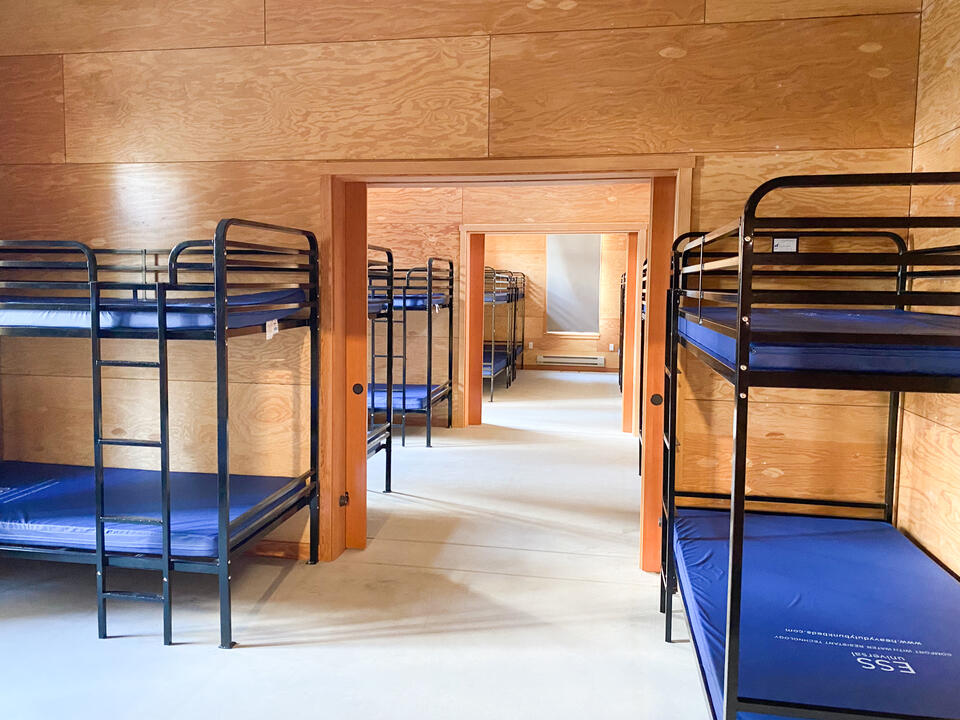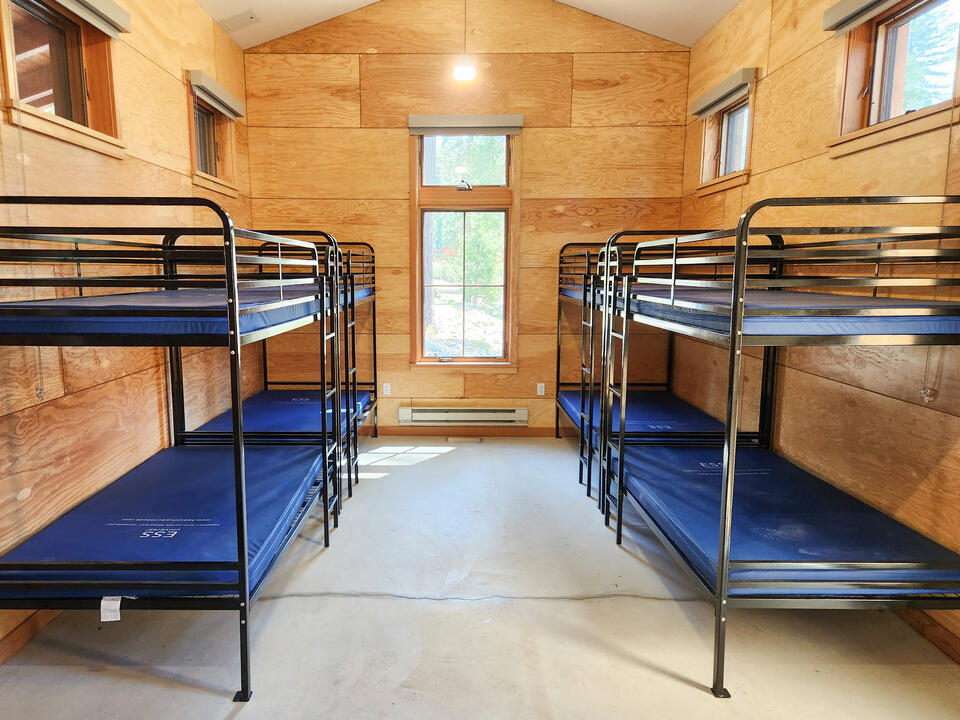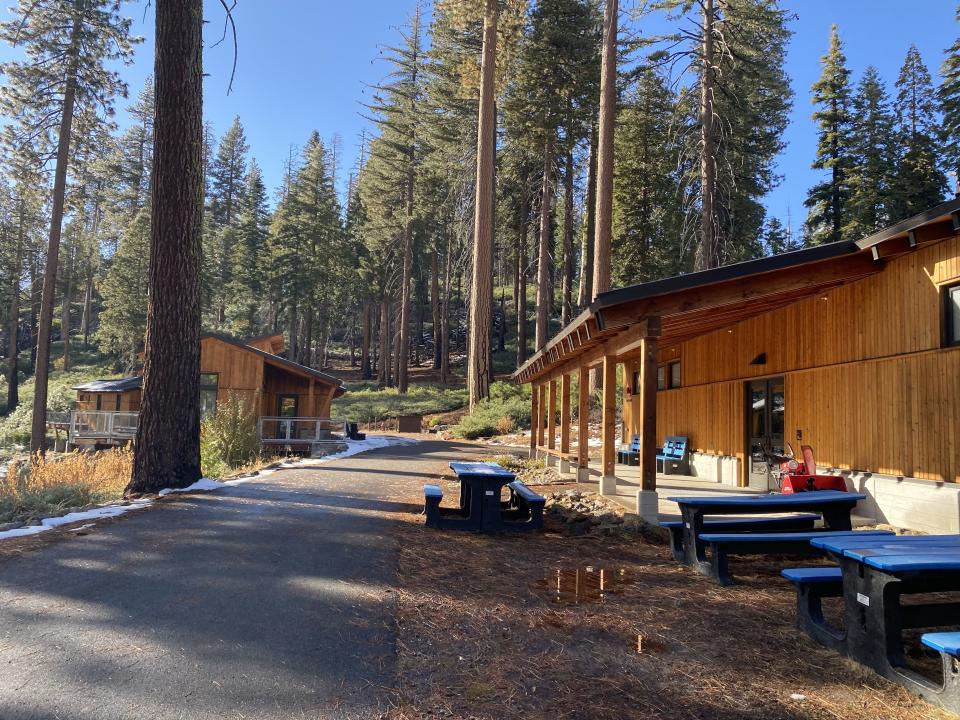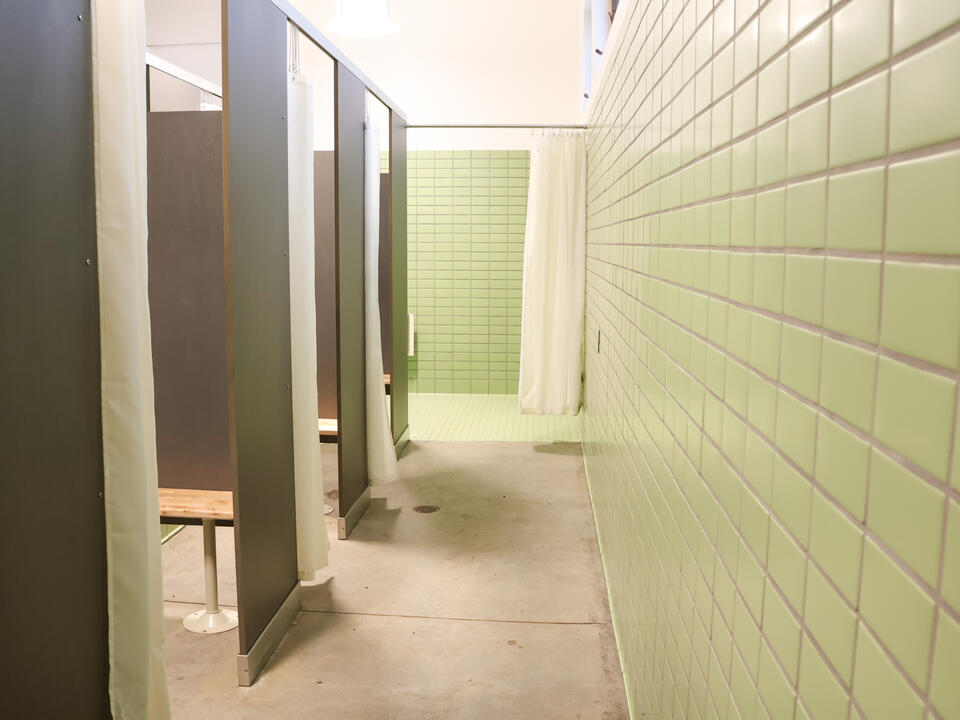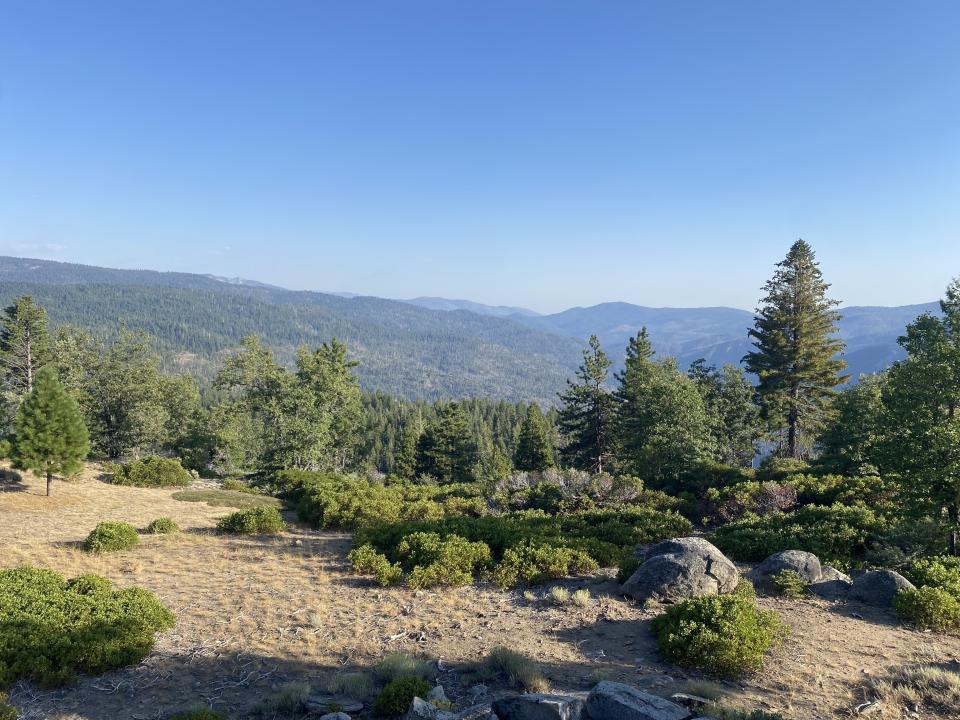Welcome to NatureBridge's National Environmental Science Center (NESC) at Henness Ridge!
The NESC is more than just a retreat space—it’s an inspiring haven surrounded by beautiful landscapes, scenic trails, and majestic forests within Yosemite National Park. This brand-new venue offers lodging and dining options, convenient access to Yosemite's iconic landmarks, and unforgettable experiences for groups seeking to come together in nature.
Whether you’re planning a corporate retreat, team-building event, or group getaway, the National Environmental Science Center at Henness Ridge offers the perfect setting for meaningful experiences. Overnight packages are available on select dates. Contact us today to start planning your unforgettable retreat!
Your retreat makes a difference: At the NESC, your retreat isn’t just an opportunity to strengthen bonds within your team or group—it’s a chance to make a lasting impact. As the largest education nonprofit partner of the National Park Service since 1971, NatureBridge serves over 30,000 students annually across four national park campuses. By hosting your retreat at Henness Ridge, you directly support hands-on environmental science education, helping provide scholarships for schools in need and connecting the next generation with the wonders of Yosemite.
What a gem of a spot for a retreat. The dining room and lodging facilities are perfectly nestled together under the trees. And the NatureBridge staff was super easy to work with. We'll be back next year!Alice
Staying at the NESC
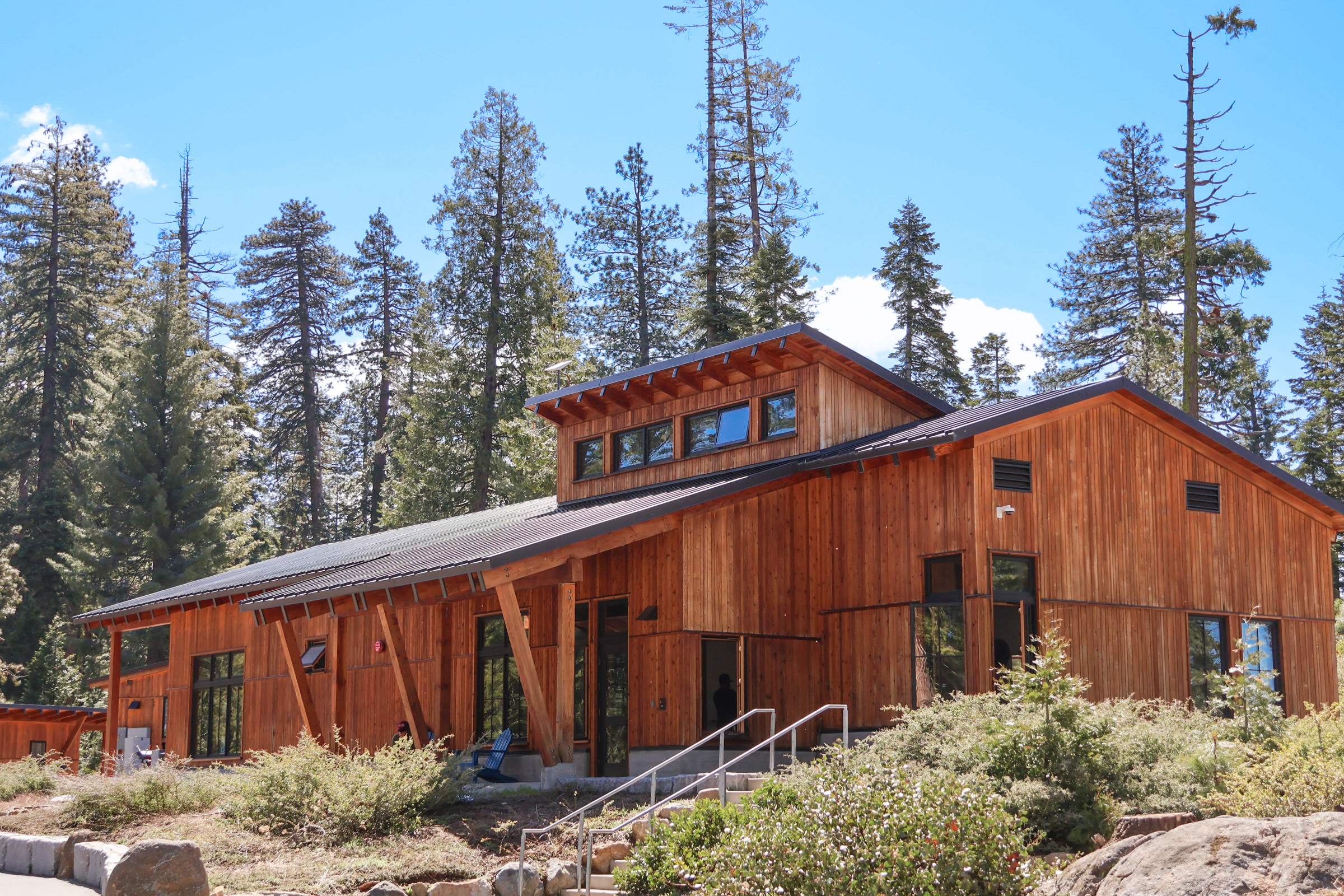
The buildings and grounds of the NESC are designed to be the ideal location for groups staying at NatureBridge Yosemite.
- Bunkhouses: Our two bunkhouses each with four rooms are designed to change access and configuration to optimize lodging accommodations for participants. There are a total of 56 beds on campus.
- Bathhouse: The bathhouse is located near the bunkhouses. Bathrooms have private stalls and individual showers (guests bring their towels and toiletries). The bathhouse also has a water bottle filling station for easy access to hydration.
- Dining: Buffet-style meals are served in the dining hall. Meals are prepared and cooked from scratch by NatureBridge culinary staff.
- Universal Accessibility: Universal access buildings and pathways around the campus provide opportunities for people with varying mobilities to stay and explore.
- Architecture: Designed to meet the LEED (Leadership in Energy and Environmental Design) standard. As part of the design there are a number of features that will reduce energy use and fossil fuel consumption for things such as meal preparation and power generation.
Dining
At the NESC at Henness Ridge, guests enjoy hearty, delicious meals served buffet-style in our welcoming dining hall. Prepared and cooked from scratch by our skilled NatureBridge culinary team, each meal is crafted with care to fuel your group for a day of exploration and connection.
- Buffet-Style Breakfasts and Dinners: Enjoy freshly-prepared meals that bring comfort and nourishment. Meal times are set, so be sure to plan your agenda accordingly.
- Trail Lunches: Perfect for a day of adventure, your group can take their lunch to go out on trail and explore the beauty of Yosemite.
- Fresh, Healthy Ingredients: We prioritize using fresh, nutritious ingredients that will keep you energized for your adventures in Yosemite National Park.
- Dietary Accommodations: We are able to meet most dietary needs with advance notice to our team.
Your dining experience at the NESC is more than just a meal—it’s an opportunity to come together, share ideas and stories, and connect in the heart of Yosemite.
Overnight Accommodations
Our two bunkhouses are designed with flexibility in mind to optimize lodging for your group’s needs. Whether you're hosting a retreat, workshop, or educational event, our versatile setup ensures both comfort and connection for participants.
Capacity: Each bunkhouse has four rooms, providing accommodations for up to 28 participants in each bunkhouse. There are a total of 56 beds on campus.
Room Layout:
- End rooms have four bunk beds, accommodating up to eight people.
- Middle rooms have three bunk beds that sleep up to six people.
Flexible Configuration: Pocket-style doors between rooms can be opened or closed to create larger shared spaces or provide more privacy.
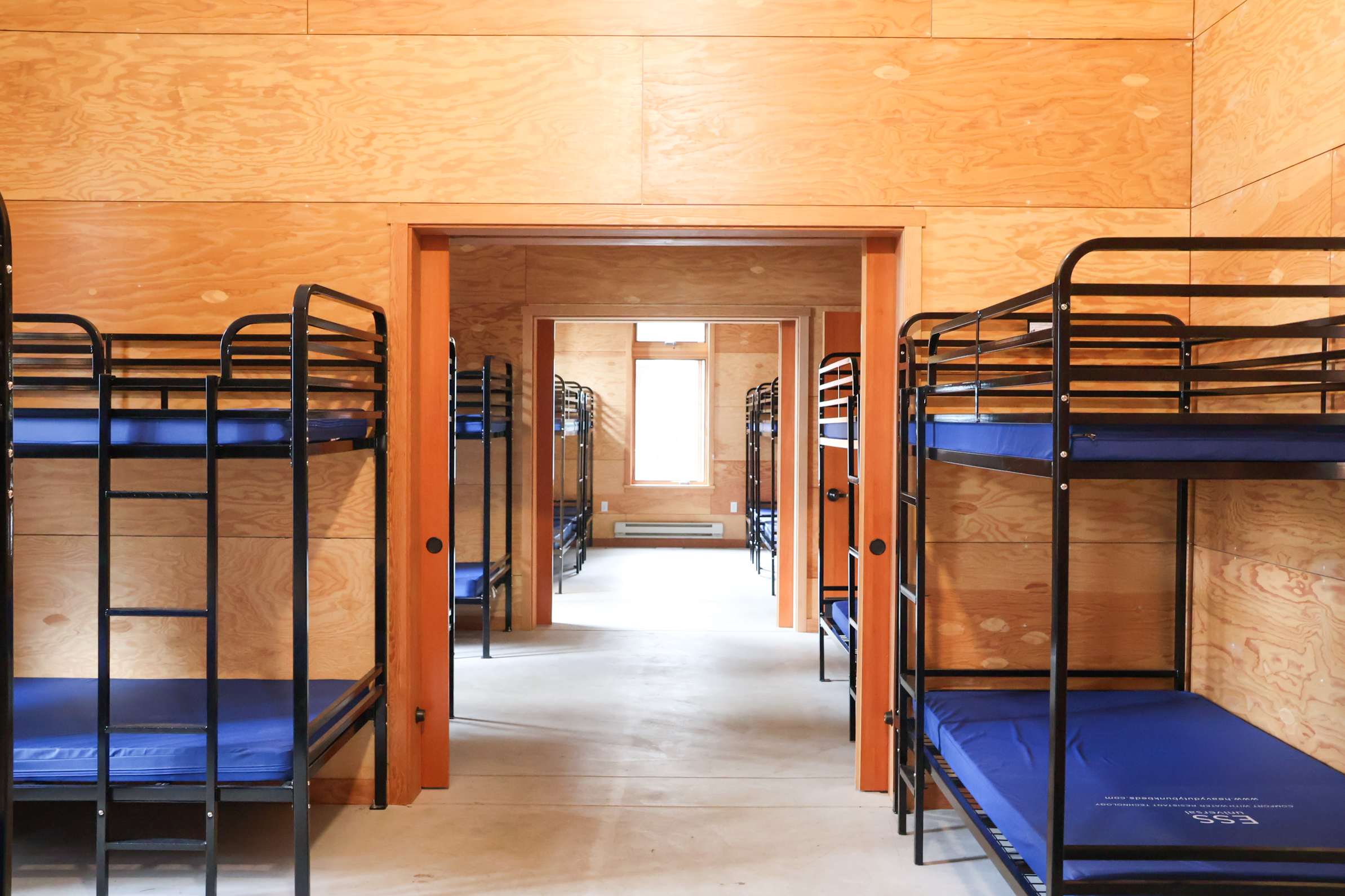
Meeting Spaces
The NESC is currently in phase one of a three-phase development plan. At this stage, there is no dedicated meeting space for participants aside from the dining hall used for meals. However, with the exclusive-use pricing option, the dining hall can be made available for meetings. This retreat center is ideal for groups seeking lodging and meals while spending most of their time exploring the beauty of the park. We look forward to expanding our facilities in future phases to better accommodate diverse group needs.
Pricing
All reservations at the NESC at Henness Ridge include lodging, delicious meals, and access to the breathtaking trails and natural wonders of Yosemite National Park right outside our doors.
Multi-Night Programs: Include three meals per night of stay (breakfast, lunch, and dinner).
Our all-inclusive pricing ensures your group can focus on enjoying the retreat experience, exploring Yosemite’s beauty, and connecting with nature and one another.
| Rates Per Person | Standard (September-October, March-August) | Off-Peak Season (November-February) |
| 2 nights | $320 | $300 |
| 3 nights | $474 | $444 |
| 4 nights | $612 | $572 |
Guaranteed Minimum Group Size for Exclusive Use #
For those seeking exclusive use of bunkhouse space, our guaranteed group minimum option ensures privacy and comfort, regardless of your final participant count. To reserve one bunkhouse exclusively (while still sharing common spaces with other groups), a minimum payment for 20 participants is required. Reserving both bunkhouses requires payment for at least 45 participants and includes the possibility of using the dining hall as a meeting space. Exclusive use reservations provide peace of mind, allowing your group to focus on building connections, exploring the beauty of Yosemite, and creating unforgettable memories together.
Gallery
Planning
Thank you for choosing to host your retreat at the National Environmental Science Center at Henness Ridge in the stunning setting of Yosemite National Park. The following information will guide you through the planning process to ensure a smooth and successful event.
Information for Conference Organizers #
Contract, payment, and participant number due dates are indicated in your welcome packet.
- Alcohol and Drug Use Policy
- Insurance Requirements
- Retreat Emergency and Safety Information
- Retreat Attendee Guidelines and Preparation
- Accommodating Dietary Restrictions
- Reservation and Planning Timeline
- Visiting Yosemite National Park
- Driving Directions from the Bay Area
- Driving Directions from Southern California
- Driving Directions to iconic Yosemite locations
Information for Conference Participants #
Trails and Destinations #
The landscape surrounding the NESC allows NatureBridge participants access to a number of inspiring trails and destinations within Yosemite—nine distinct Sierra Nevada habitats, breath-taking views of the South Fork Merced River, 11 Mile Meadow, Deer Camp, a former homestead and a historic National Park Service fire tower. Our staff is happy to recommend hikes for your group.
There are three main routes departing from campus, connecting NatureBridge participants directly to miles of established trails and the Yosemite Wilderness and Sierra National Forest.
- Wawona Wagon Road: Established in 1853, Wawona Wagon Road accesses a variety of habitats, including a lush meadow system and evidence spanning nearly 6,000 years of human history.
- Sugar Pine Railroad Line: Dating back to the early 1900s, Sugar Pine Railroad Line passes through the heart of the campus. Today these historic roads serve as walking paths with easy 2-5% grades, connecting to seldom visited corners of the park.
- Deer Camp Trailhead: Located less than a quarter mile from campus, Deer Camp Trailhead allows participants to access some of the less frequented southern reaches of Yosemite’s wilderness.
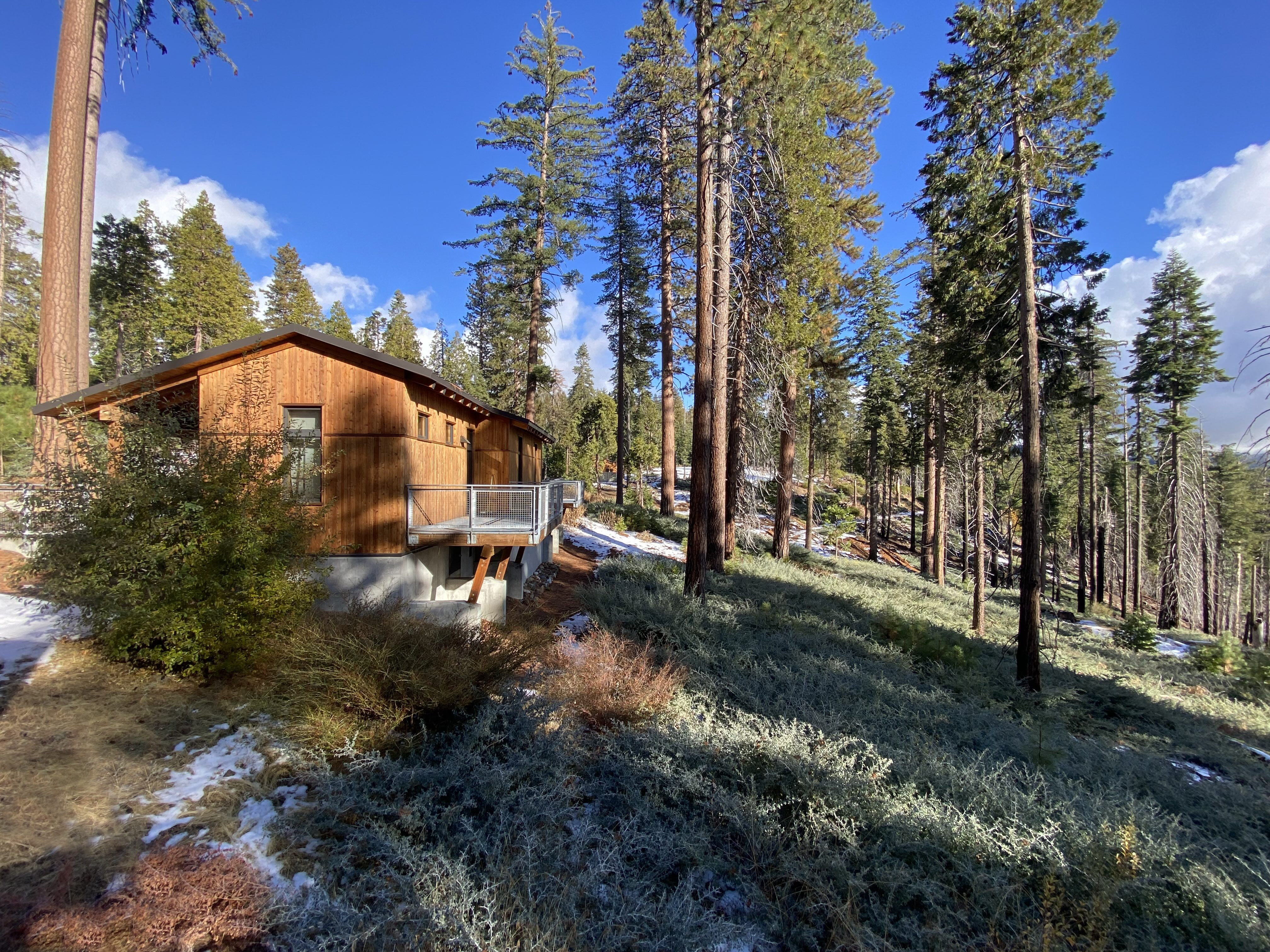
Other Destinations and Activities at Yosemite National Park #
The NESC is in a prime location within Yosemite National Park that allows for even more adventure, exploration, and connection to nature. Enjoy Yosemite to the fullest by visiting famous landmarks and viewpoints such as:
- Yosemite Valley: Experience Yosemite’s iconic cliffs and towering waterfalls. There are a variety of hiking options for all skill levels. Yosemite Valley is home to a variety of museums and interpretive sites where you can dig deeper into the natural and cultural history of the park.
- Tunnel View: One of the most famous views of Yosemite Valley located at the east end of the Wawona Tunnel along the Wawona Road. From here you can see El Capitan and Bridalveil Fall rising from Yosemite Valley, with Half Dome in the background.
- Mariposa Grove of Giant Sequoias: Located near Yosemite's South Entrance, the grove is home to about 500 mature giant sequoia trees. Visit the largest of Yosemite’s three sequoia groves and marvel at the beauty of trees that are over 3,000 years old.
- Glacier Point (Late Spring-Early Fall Only): The Glacier Point Road offers unrivaled views, where you can gaze down at Yosemite Valley from thousands of feet above, capturing a perspective unlike those offered anywhere else in the park. Experience the breathtaking beauty of Yosemite by watching the sunset at Glacier Point or hiking the stunning trail along the rim of the Valley from Taft Point to Sentinel Dome.
- Tuolumne Meadows (Summer Only): One of the largest high-elevation meadows in the Sierra Nevada that offers stunning views, hiking opportunities, and more.
- Badger Pass: Cross-country skiing and snowshoeing right from our back door (winter only).
Download our full Drive Times to Yosemite’s Iconic Locations guide to help your group map out logistics, arrive together, stay on schedule, and make the most of every memorable moment.
Naturalist Programs with NatureBridge: As a part of your NatureBridge retreat, you can schedule a naturalist program led by our exceptional environmental science educators. This program can be added for an additional fee and is a great way to get the most out of your Yosemite adventure. NatureBridge’s trained naturalists will lead you on hikes (ranging from easy to adventurous), teach your group about the geology and flora/fauna of Yosemite, or bring your group together with team-building activities.
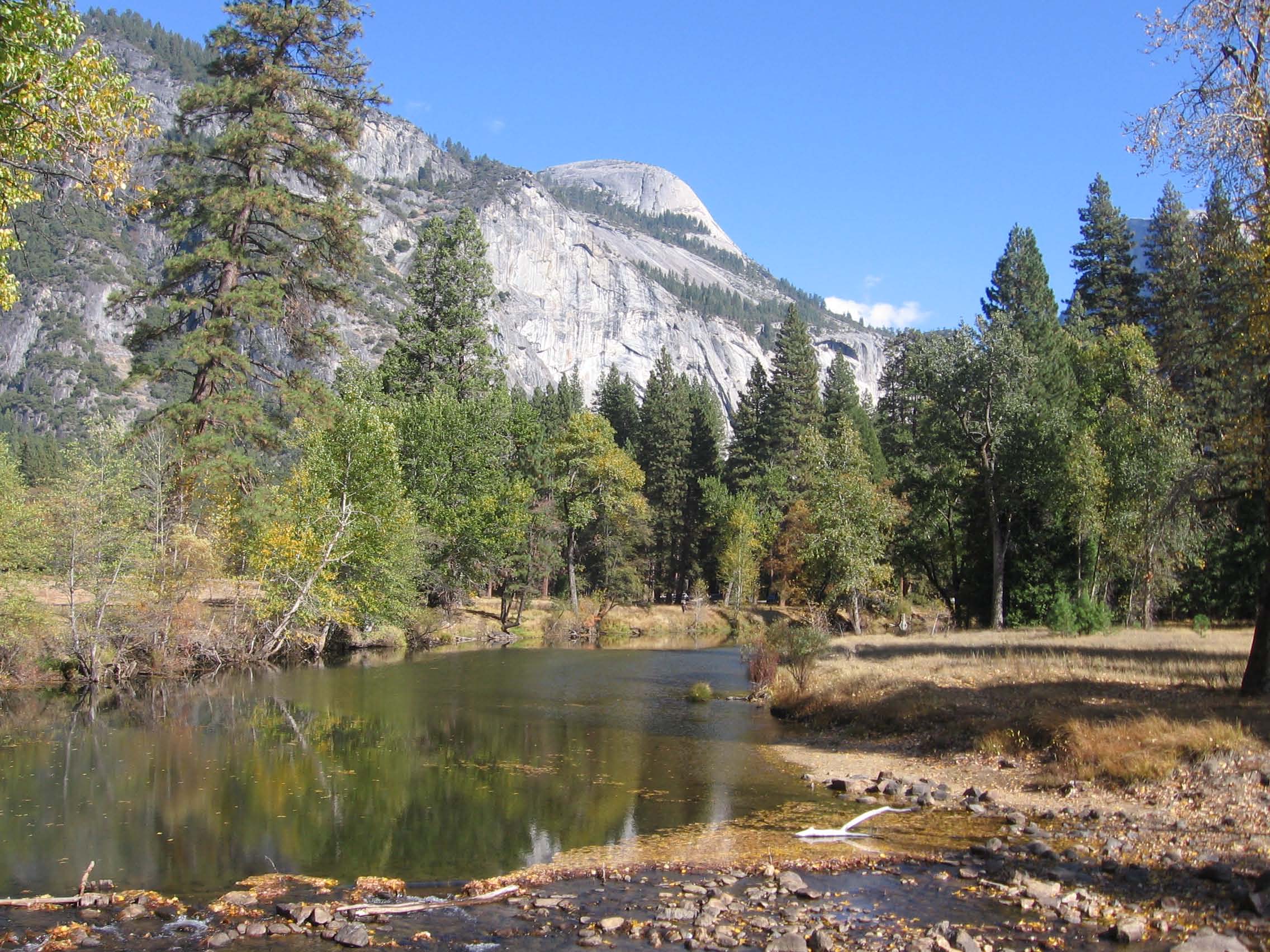
FAQ #
-
How do I make a reservation?
Please contact our reservations team! We will work with you to review available dates and to plan a package that fits your group’s specific needs. A signed contract and a 25% nonrefundable deposit are required to book your reservation. Full balance and proof of insurance are due a month before your event takes place.
Click "Request Information" to tell us about what you’re planning! -
What is your cancellation policy?
Because the group’s confirmed reservation creates a series of commitments which NatureBridge must make (i.e., turning away other groups, scheduling staff, ordering food, etc.), we are unable to refund deposits. Groups cancelling within 90-days of their scheduled event are responsible for the full balance of the program.
-
What does it mean that your bunkhouses are shared?
At NatureBridge, we work to cultivate a community of learning and collaboration. Our two bunkhouses are designed with flexibility in mind to optimize lodging for your group’s needs. Each bunkhouse has four rooms, providing accommodations for up to 28 participants in one bunkhouse. Pocket-style doors between rooms can be opened or closed to create larger shared spaces or provide more privacy with six to eight beds per room. Beds are twin-sized bunk beds, and we ask participants to provide their own bedding. Participants are prohibited from sleeping in vehicles or tents on site during their stay.
-
What are the bathrooms like?
The bathhouse is located near the bunkhouses. Bathrooms have private stalls and individual showers (guests bring their towels and toiletries). The bathhouse also has a water bottle filling station for easy access to hydration.
-
Do you provide bedding and toiletries?
We ask participants to provide their own bedding, towels, and toiletries. Linens may be provided for an additional charge with advance notice.
-
What can we expect in your dining hall?
Our dining hall serves fresh, delicious meals buffet-style. Morning and evening meal times are set (breakfast at 7:45 a.m., dinner at 5:30 p.m.), so be sure to plan your retreat activities so you can be on time. Our sample menu is coming soon! At NatureBridge, the dining hall is also a shared space with other groups on campus. Seating is open for all groups, and we ask all participants to bus their own tables.
-
I have dietary restrictions. What can you accommodate?
NatureBridge is dedicated to providing a safe dining experience for our guests. We are pleased to be able to accommodate several dietary restrictions. Please see our Dietary Restrictions sheet for more information or visit the Yosemite Food page.
-
Do you have internet available?
Free wireless internet is provided in the dining hall/administration building for participants. Please note that we cannot fully guarantee the availability of internet access due to the possibility of bad weather or unforeseen technical issues here at our Henness Ridge location. If an issue arises, we will strive to fix it as quickly as possible.
-
Will our cell phones work?
Cell phone coverage is spotty in Yosemite National Park. NatureBridge provides free wireless internet access for our guests. The NESC has its own landline telephone for emergencies.
-
Can we bring alcohol?
Please view our Alcohol and Drug Use Policy. Because our campus serves school groups throughout much of the year, we restrict alcohol on site. However, if your group is the only group on-site, Group Coordinators can arrange with our conference team to bring beer and/or wine. No hard alcohol is permitted. Beer and/or wine can be stored and consumed in designated spaces only.
-
What are the best transportation options?
We are located in a remote area of Yosemite National Park. Public transportation does not serve Henness Ridge. Arriving by carpool or a commercial transportation provider is the best way to reach us. All commercial transportation providers must have a valid commercial use agreement with the National Park Service to operate within Yosemite National Park. Please visit the NPS CUA Requirements Page for more.
Transportation time from the Fresno Yosemite International Airport (FAT) is approximately 2 hours and 30 minutes by car or bus. If visiting during peak season in the park, plan for extra time for traffic and lines at the entrance station.
EV charging stations are available in Yosemite Valley and outside the park’s entrance stations. There are no EV chargers on site at Henness Ridge.
-
Where should we park?
NatureBridge has a parking lot on campus but space is limited. The parking lot has space for up to 30 cars when there is no snow on-site. When there is snow, the parking lot has space for up to six vehicles (in addition to staff spaces). We encourage retreat attendees to carpool to minimize the number of cars (and fossil fuel emissions).
-
Do I need to make an NPS reservation to enter Yosemite?
No, NatureBridge will provide you with a gate pass that clears both the reservation system and the entrance fee.
Request Information
Find Us
NatureBridge
7730 Henness Ridge Road
Wawona, CA 95389
